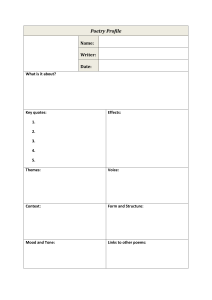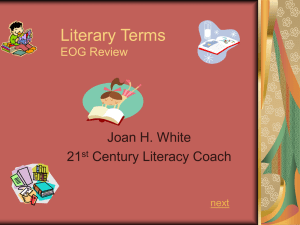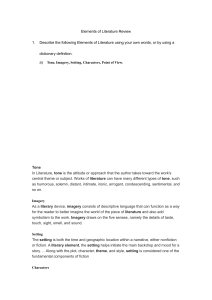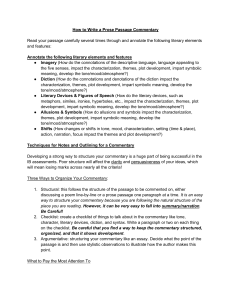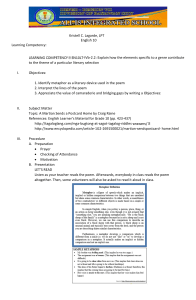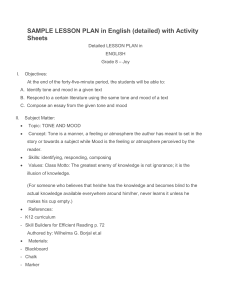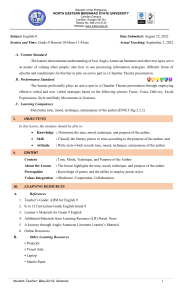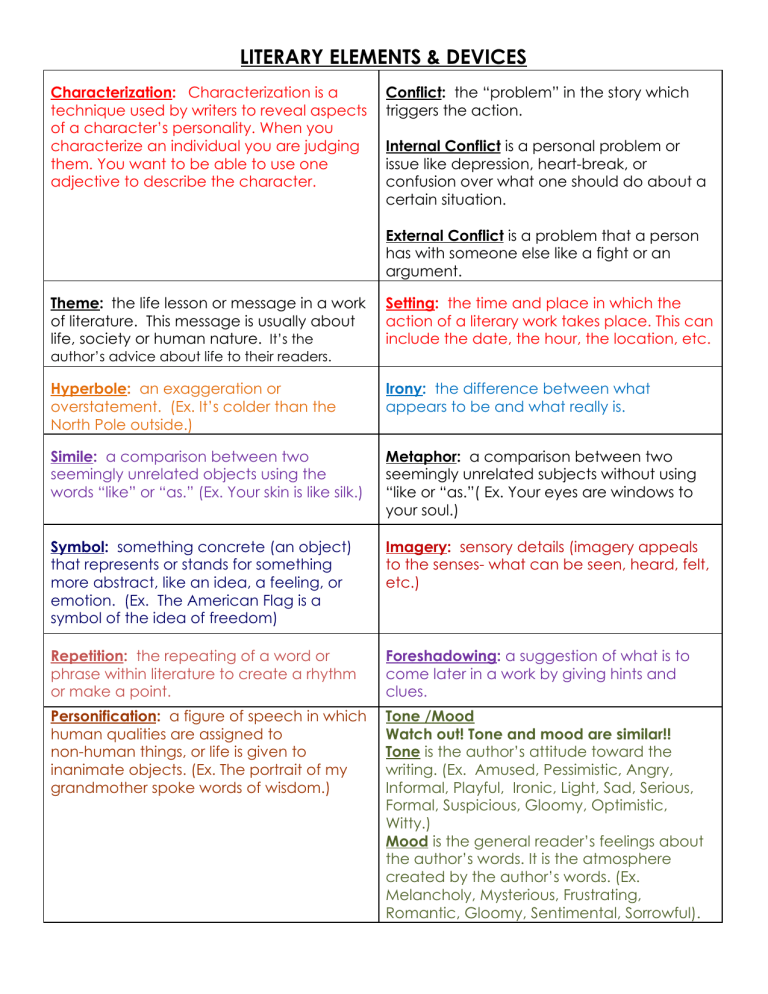
LITERARY ELEMENTS & DEVICES Characterization: Characterization is a technique used by writers to reveal aspects of a character’s personality. When you characterize an individual you are judging them. You want to be able to use one adjective to describe the character. Conflict: the “problem” in the story which triggers the action. Internal Conflict is a personal problem or issue like depression, heart-break, or confusion over what one should do about a certain situation. External Conflict is a problem that a person has with someone else like a fight or an argument. Theme: the life lesson or message in a work of literature. This message is usually about life, society or human nature. It’s the Setting: the time and place in which the action of a literary work takes place. This can include the date, the hour, the location, etc. Hyperbole: an exaggeration or overstatement. (Ex. It’s colder than the North Pole outside.) Irony: the difference between what appears to be and what really is. Simile: a comparison between two seemingly unrelated objects using the words “like” or “as.” (Ex. Your skin is like silk.) Metaphor: a comparison between two seemingly unrelated subjects without using “like or “as.”( Ex. Your eyes are windows to your soul.) Symbol: something concrete (an object) that represents or stands for something more abstract, like an idea, a feeling, or emotion. (Ex. The American Flag is a symbol of the idea of freedom) Imagery: sensory details (imagery appeals to the senses- what can be seen, heard, felt, etc.) Repetition: the repeating of a word or phrase within literature to create a rhythm or make a point. Foreshadowing: a suggestion of what is to come later in a work by giving hints and clues. Personification: a figure of speech in which human qualities are assigned to non-human things, or life is given to inanimate objects. (Ex. The portrait of my grandmother spoke words of wisdom.) Tone /Mood Watch out! Tone and mood are similar!! Tone is the author’s attitude toward the writing. (Ex. Amused, Pessimistic, Angry, Informal, Playful, Ironic, Light, Sad, Serious, Formal, Suspicious, Gloomy, Optimistic, Witty.) Mood is the general reader’s feelings about the author’s words. It is the atmosphere created by the author’s words. (Ex. Melancholy, Mysterious, Frustrating, Romantic, Gloomy, Sentimental, Sorrowful). author’s advice about life to their readers.

